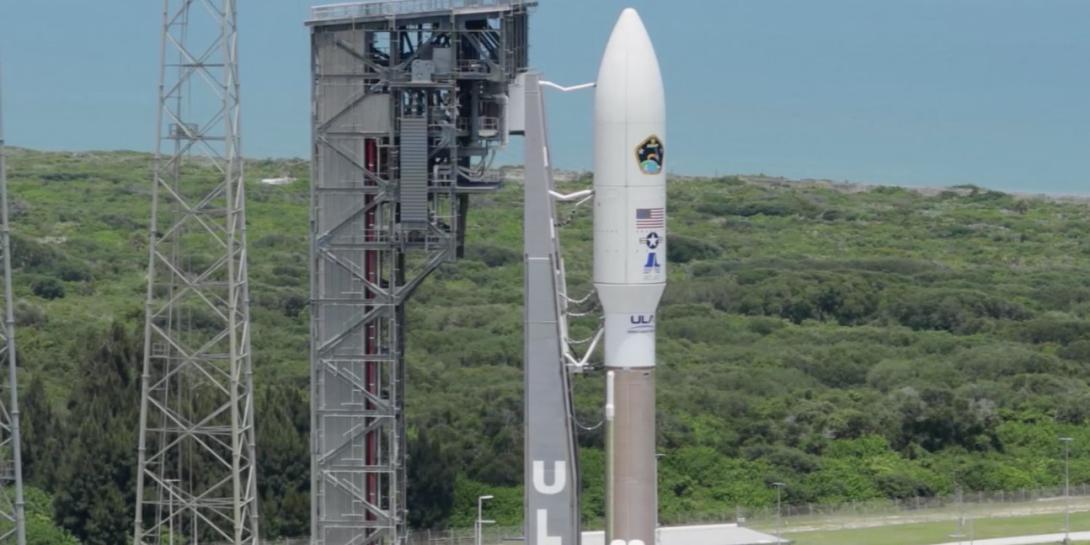Technological Focuses of the Space Force
To outpace its adversaries in space, the U.S. Space Force intends on being a digital service. With a smaller force of about 16,000 total warfighters, civilians and contractors, the Space Force will have to rely on industry to bring the technologies needed to be a digitally advanced, said Lt. Gen. Chance Saltzman, USSF, deputy chief, Space Operations, Cyber, and Nuclear, Space Force.
“Gen. Raymond has challenged us to be at the leading edge in establishing Space Force as a digital service, and that comes with a lot of technology challenges,” Gen. Saltzman said of the services’ leader, Gen. John “Jay” Raymond, USSF, chief of Space Operations.
“We know we are going to have rapidly pull in and integrate technology to help us do our job, and when you don't have [as many] people, you really need the technology to help automate and accelerate your capabilities,” Gen. Saltzman said.
Speaking virtually to corporate and other leaders during AFCEA International’s Northern Virginia, or NOVA, Chapter Luncheon on September 18, the general shared some of the technological solutions that he and others in the service would like to see from the industry.
First, for the Space Force’s new headquarters in the Pentagon, having a digital focus from the outset means employing advanced computing technologies to aid leaders’ decision making.
“From my perspective, as the deputy chief operations officer, one of the things that I'm focused on is how do I assess how well we are doing in our mission areas, how well our systems are performing, and then even how well are people performing,” Gen. Saltzman explained. “And so, I'm envisioning a dashboard-like [system] where cloud-based data is available in real time that depicts how we are doing with those goals and objectives that we are trying to accomplish. Ideally we would be able to layer onto that [platform] artificial intelligence algorithms and analytics that would then help provide decision support to me, to say, ‘this is a shortfall,’ or ‘here is the root cause,’ and ‘here are some courses of action or mitigation that may be worth considering in order to course correct.’”
Presently, those type of systems do not exist at the Space Force’s headquarters. “It is definitely something that we want to pursue quickly in order to give us rapid situational awareness, the ability to orient quickly around what the issues are that need to be addressed, and then have decisional support to help tee up some options to fix those things,” he continued.
The Space Force already is making inroads in its next-generation data management strategy—led by Mark Brady, the service’s chief data officer—that will support the digitalization of information across the service, bringing data that could feed such situational awareness solutions.
Another technical focus area for the young service is to grow its range infrastructure. “The best way to prepare for success in a warfighting domain is through testing, training and tactics development, and in Air Force parlance that plays out in our range structures,” Gen. Saltzman explained. “And it doesn't take a lot to realize that the space community doesn't really have a robust test and training range infrastructure. Our ability to try things, our ability to enhance tactics, our ability to train operators, to more rapidly implement procedures, we just don't have that infrastructure.”
The service also wants to leverage live, virtual and constructive (LVC) simulation technologies, he noted. “We are going to have to get better at figuring out how we leverage LVC and live fly range environments so that we can prepare our operators to be successful in this new fighting domain.”
In addition, the Space Force is examining the way in which it acquires technology. Leaders intend to pursue more of a horizontal “plug and play” approach to integration of capabilities, which is less about exquisite, proprietary and stove-piped tools obtained in previous military vertical acquisition.
“We are working hard to figure out how we compress the governance of our capabilities development process, and then how we make sure we field things in a way where they can be rapidly integrated,” Gen. Saltzman stated. “It is about how we get the most out of what industry has to offer, lowering the thresholds and barriers to working and providing capabilities to the government. [It is about] how we rapidly field new capabilities, integrate them into operations on a timeline that keeps them tactically relevant.”
And like the Navy and Marine Corps’ successful Information Warfare Research Project—that awards prototype development projects to nontraditional sources, research and development labs, and industry through the flexible contracting platform known as other transaction authority (OTA)—the Space Force is supporting the Space Enterprise Consortium (SEC). The SEC already consists of 422 industry leaders, academic institutions and innovative early stage startup companies that are working on next-generation space technologies, Gen. Saltzman shared.
“And 335 of those members are what we would consider nontraditional vendors, and we’ve had 75 prototype awards to date, up to about $125 million. Because of the approach to this and these nontraditional vendors, we've been able to reduce the timeline needed to get contracts and requirements awarded by about 36%. We are leveraging our OTA authorities, and the current ceiling for that authority is $1.4 billion. So, we have some latitude here.”
Lastly, the general warned of the consistent threat from adversaries—especially China and Russia—regarding intellectual property theft. “Industry really must proactively protect against what we are seeing in terms of predatory exploitation of our abilities and technologies,” he warned. “You guys are the best in the world at what you do, and our adversaries understand it, and they are trying to steal that intellectual capital, as fast as they can. As we partner together, we are going to have to keep that in mind and make sure that we establish good, solid, protective practices so that we can protect our most critical technologies and ideas.”





Comments